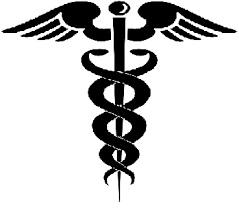

“When you lift up the Son of Man, then you will realize that I AM” (John 8:29).
Num 21:4-9; John 8:21-30
Today’s readings pair the symbol of the mounted seraph as a remedy for the bite of fiery serpents in the desert with the “lifting up” of Jesus on the cross. It is an astonishing merger that suggests an even more shocking theological idea first from St. Paul and then in John’s Gospel, namely, that Jesus took our sins on himself: “For our sake God made him to be sin who knew no sin, so that in him we might become the grace of God” (2 Cor 5:21).
As John’s Gospel advances the signs that reveal Jesus as “I AM,” the divine name, he interweaves the theme of Jesus being lifted up on the cross as the climactic sign that combines his sacrificial death, then his resurrection, and finally his ascension into heaven. Only the eyes of faith can see this magnificent revelation of God’s plan to remove sin from the world by placing it on the shoulders of the Beloved Son, who puts sin to death by his own death.
The story from Numbers of the bronze serpent on a pole provides John with the metaphor to convey this awesome mystery. It is not an unfamiliar image. The Greek caduceus, intertwined snakes on a pole, became a modern symbol for medicine, and it may have influenced the Bible story. Ancient doctors saw a cure in the curse in the same way that modern science vaccinate patients with a small dose of a virus to build up resistance. Moses tells the victims to look at the bronze serpent in order to be healed.
For his disciples, seeing Jesus crucified was doubly shocking because it implied a divine curse. In Galatians 3, St. Paul quotes Deuteronomy 21, “Cursed is everyone who hangs on a tree.” The journey to faith revealed the startling truth that from this curse came the blessing of salvation for sinners, why it was “necessary for the Messiah to suffer in order to fulfill the Law and the Prophets” (Luke 24: 25-27).
As we approach Holy Week, we are drawn into this mystery of how a sinless Jesus took upon himself the sins of the world. He was cursed, abandoned and rejected by the world he came to save. The Psalms and the Songs of Isaiah provide a heart-rending chorus as score to the final scenes of his lonely vigil on the cross, his face searching the heavens for the face of his loving Abba, praying to seal his mission and to begin his journey homeward.
Advertisement








